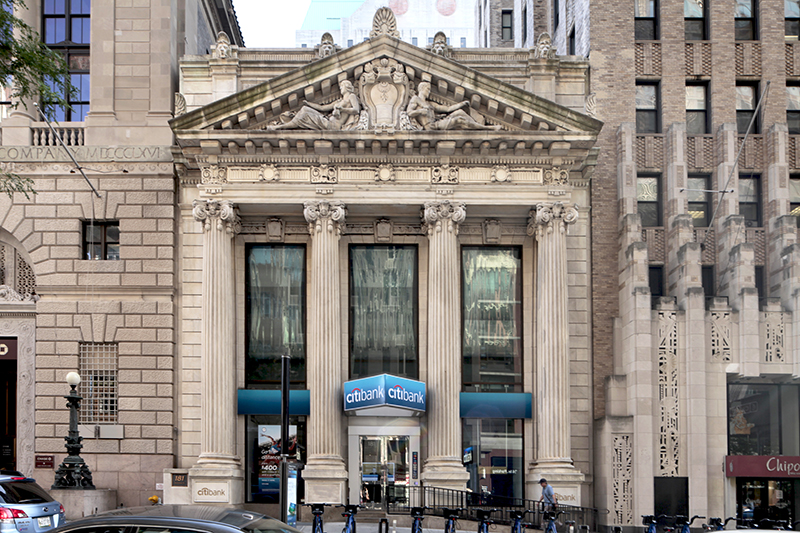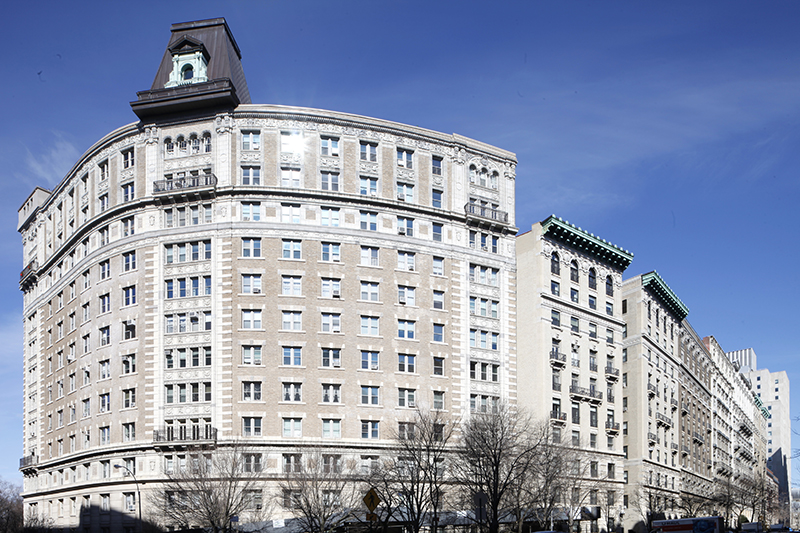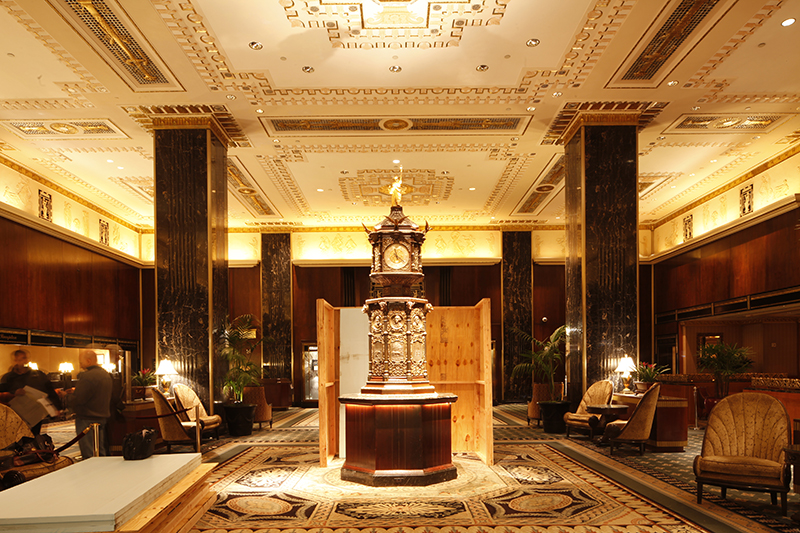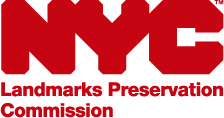|
Spring 2017 |
Inside This Issue
|
|
|
|
|
 |
| Message from the Chair |
As the weather gets warmer, New York City begins to buzz with activity, and that includes our landmarks and historic districts. In April, LPC's preservation department kept pace with 2016's record permit numbers.
Below you'll find out more about our newest NYC Landmarks. These include 181 and 185 Montague Street- two imposing and well-preserved Brooklyn Buildings that highlight the commercial history of the corridor known as "Bank Row." In February, after nearly 50 years on the Commission's radar, we successfully granted landmark protection to the Cathedral of Saint John the Divine in Upper Manhattan and six historic buildings in the close complex. We also designated the Morningside Heights Historic District, which represents a rapid period of residential development in that area of Upper Manhattan during the first decades of the 20th Century. Along with the designation of the district, the agency launched an online 3-D Historic District Map, which we hope will be an educational tool for the public as well as an aid to property owners during the LPC application process. In March, the Commission designated the beloved and world-renowned Waldorf Astoria interiors. The designation protected the rich and beautifully detailed art-deco features of the hotel's interior public spaces, while preserving the unique experience of moving through the hotel's varied interiors.
As always, we welcome your feedback. If you have any questions or comments, please feel free to contact me at Chair@lpc.nyc.gov.
Sincerely,
Meenakshi Srinivasan
|
|
|
|
|
 |
| Brooklyn's Newest Landmarks |
On January 24th LPC unanimously voted to designate the People's Trust Company Building at 181 Montague Street and the National Title Guaranty Company Building at 185 Montague Street.
The designated properties are just outside the Brooklyn Heights Historic District to the west and the Borough Hall Skyscraper Historic District to the east. For nearly a century, this section of Montague Street between Clinton and Court Streets has been known as Bank Row, and has been populated by banks, insurance companies, and real estate agencies that sought a location close to Borough Hall, while providing services to the growing population of Brooklyn Heights.
181 Montague Street is an imposing neo-Classical bank building built in 1904 for the Brooklyn-based People's Trust Company. As one of the first commercial banks built in this section of Brooklyn Heights, it was essential to the development of Bank Row on Montague Street.
Designed in 1929-30 by design firm Corbett, Harrison & MacMurray, the limestone and brick National Title Guaranty Company Building at 185 Montague Street is notable for its strong massing and unusual details. The building is a notable example of Art Deco commercial architecture. Learn more!
|
|
|
|
|
| Cathedral of St. John the Divine |
On February 21st, the Commission unanimously designated the Cathedral Church of St. John the Divine and the Cathedral Close as a New York City Landmark.
Although unfinished, Cathedral of St. John the Divine is one of the largest churches in the world and serves as the seat of the Episcopal Diocese of New York. The designated complex consists of the Cathedral Church and the six buildings that form the Close, including the Leake & Watts Orphan Asylum building, St. Faith's House, the Choir School, Synod House, the Deanery, and the Bishops House. The complex is considered to be one of the most outstanding ecclesiastical ensembles in the city. Learn more!
|
|
|
|
|
 |
| Morningside Heights Historic District |
The new Morningside Heights Historic District was designated on February 21st and consists of 115 mostly residential buildings in an area stretching from West 109th Street to West 119th Street, Riverside Drive to Amsterdam Avenue.
Like much of the Upper West Side, the earliest residential development in the proposed district includes private town houses and speculative rows that were built in the 1890s. However, it was the arrival of the IRT subway in 1904 with stops at 110th and 116th Streets that spurred development and rapidly transformed the area into a neighborhood of apartment buildings marketed to the middle class. Within the boundaries of the district, 64% of the buildings were built between 1900 and 1910. Learn more!
As a complement to the designation, the Commission launched a digital 3-D webmap of the district. Within a 3-D environment, users can pan, zoom and rotate around the Morningside Heights neighborhood, as well as focus on specific areas of interest within the historic district. Users can also click on buildings in the district to activate pop-up windows providing detailed building information, current images, and historic tax photos.
|
|
|
|
|
 |
| Waldorf Astoria Interiors |
On March 7th the Commission voted to landmark several interior spaces of the Waldorf-Astoria Hotel in Manhattan. Considered one of New York City's most prominent and culturally significant hotels, the Waldorf-Astoria was designed by Schultze and Weaver and opened in September 1931. The hotel's exterior became a New York City landmark in 1993. The interior designation protects the building's most lavish public spaces, including interconnected rooms and corridors on the ground, first, second and third floors.
Designated spaces on the first floor include the lofty Park Avenue Lobby (at left), an entry hall with 13 murals and an immense floor mosaic by the French artist Louis Rigal, and the elegant wood-paneled Main Lobby, featuring black marble pillars and ceiling reliefs. On the east end of the first floor, near Lexington Avenue, are elevators with distinctive metal doors and double staircases with "frozen fountain" balustrades leading through the first, second and third floors. The designation brings the number of New York City Interior Landmarks to 119. Learn more!
|
|
|
|
|
 |
| FAQ: Spotlight on Enforcement |
My building has just been designated as an individual landmark or as part of a historic district, what should I do to ensure I follow the landmarks law?
The Commission helps preserve the City's landmarks by working with owners to ensure that planned changes are appropriate to the character and style of their buildings. The Landmarks Law requires owners to keep landmark properties in good repair and obtain a permit from LPC before starting work that affects or alters the appearance of the building, or if the work requires a Department of Buildings Permit.
When work is done on a landmark property without a permit, or when a landmark building is not maintained in a condition of good repair, the Commission may issue a violation, which may result in penalties. Please visit the LPC website to see what types of work require an LPC permit. If you want to perform work on your property but are unsure if you need an LPC permit, please contact the agency and we are happy to provide guidance.
What happens if work is done to a landmark building without a permit?
The goal of the Commission’s Enforcement efforts is to protect designated buildings. Consequently, the LPC Enforcement team works closely with owners and tenants to provide guidance on how to address violations so that a permit can be issued for the work. LPC initiates this dialogue by sending a Warning Letter describing the work performed without a permit and instructing the owner to submit an application to legalize or correct the work. Sometimes the work complies with the Commission’s regulations and the LPC will issue a permit retroactively for the work. However, very often work that is completed without the benefit of LPC guidance does not comply with regulations and requires proposing modifications before a permit can be issued.
I purchased a landmark building with existing violations. What can I do to address the violation?
The Commission's expert staff frequently works with new owners whose buildings have pre-existing violations. In most cases, an owner can correct a violation by obtaining a permit from the Commission that retroactively legalizes the work performed on the property or by performing corrective work authorized by a newly obtained permit that corrects the violation. Please note that in some cases, the Commission will require that the illegal work be modified, removed, or replaced. An uncorrected violation can be an obstacle to an owner in refinancing or selling his or her property. While there is an outstanding violation on a landmark, no Department of Building (DOB) permits will be issued for the property unless the DOB permit is for correcting an unsafe condition.
Continue reading about LPC’s Enforcement Department!
|
|
|
|
|